What is sex for?
Ask anybody what the purpose of sex is and, after a few funny looks, you’ll probably get the answer ‘to make babies’. Yet, although millions of acts of sexual intercourse take place across the globe every day, the vast majority of couples have no intention of making a baby. In practice, many of them use contraception to prevent pregnancy. In the same way, if you ask what breasts are for, you might get the answer ‘for breast-feeding’. However, when in close proximity to a topless woman the average man probably does not spend much time thinking about how many children she could successfully breast-feed. All mammals produce milk but humans are the only ones with permanently swollen hemispheres of fatty tissue.
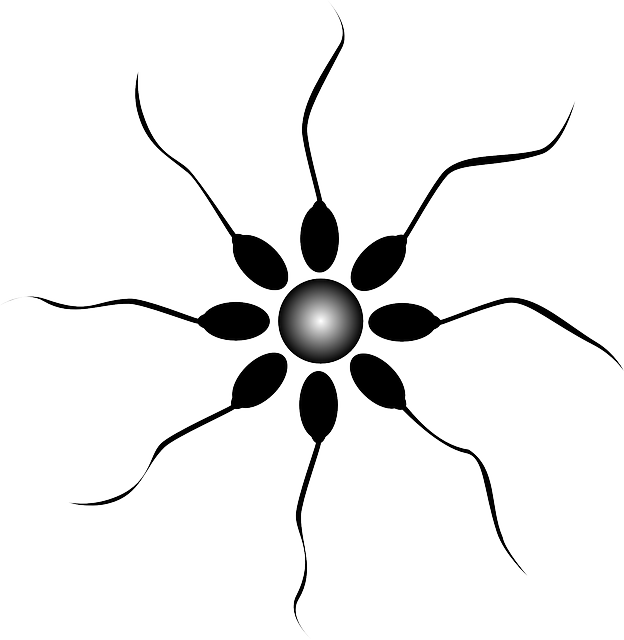
Clearly, sex in humans is about more than just making babies. In fact. We seem rather obsessed with sex. Humans are one of the few species that have sex when there is no egg to be fertilised, and statistics tell us that the average human has sex several thousand times in their lifetime. As you read through the account of human reproduction that follows, have a think about the function of sex in humans. If it is for more than basic reproduction, what is its purpose? Is it simply for pleasure? Or it is a form of ‘social cement’, strengthening the bond between people, encouraging them to fall in love and stay together? You decide.
THE NEED TO REPRODUCE
None of us is immortal and so, in common with all other types of organism, we must reproduce in order for our species to survive. The need to reproduce, so passing genes on to the next generation to ensure the survival of the population, is one of the basic features of living organisms. In many organisms, the urge to reproduce can override the urge to live.
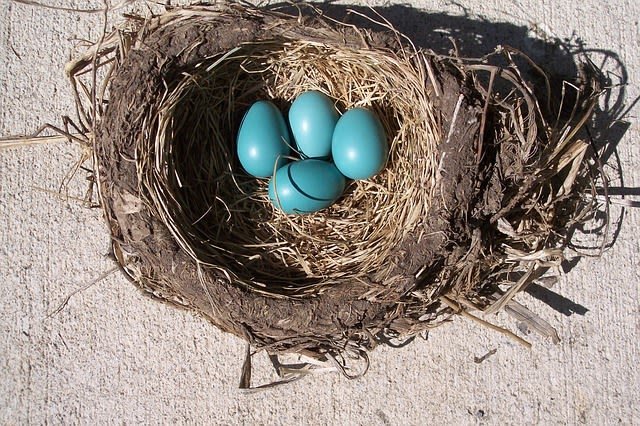
An interesting way of looking at the whole business of reproduction is to think of organisms as disposable containers for the genes they contain. None of us will live forever, but our genes, mixed with those from other people, might survive long after we are forgotten. Reproduction is either sexual or asexual (non-sexual). All animals reproduce sexually, and some animals also reproduce asexually in some circumstances.
ASEXUAL REPRODUCTION IN ANIMALS
Asexual reproduction involves no fertilisation: one individual organism produce one or more new individuals. Since there is only one parent, there is no mixing of genetic material and so the new organisms are clones – organisms that are genetically identical to the parent. Asexual reproduction can quickly increase the number of organisms in a population and it avoids the need to find a mate.
This works well if the environment is favourable and does not change. The problem with asexual reproduction, though, is that the organisms produced are all identical and so the population cannot adapt to change. The only variation that occurs in asexual reproduction is by mutation. This means that organisms that reproduce asexually tend to evolve more slowly, and hardly any animal species uses it as their only means of reproduction.

A TABLE SHOWING THE COMPARISON BETWEEN ASEXUAL AND SEXUAL REPRODUCTION
| Type of reproduction | Advantages | Disadvantages |
| Asexual | It is fast – one individual can build up a population under favourable circumstances | All offspring are identical. There is less genetic variation, so evolution is slower. |
| Sexual | Produces variation. It allows organisms to evolve and adapt to changes in their environment | Slow – requires two individuals. Individuals are vulnerable during mating and pregnancy. |
There are three main methods of asexual reproduction in animals:
- Budding: Some cnidarians, flatworms and annelids multiply by budding. A new individual simply grows out of the body of the parent.
- Parthenogenesis: This term means ‘virgin birth’ or reproduction without fertilisation. It occurs in a variety of animal types, including some insects, fish, amphibians and lizards, when unfertilised eggs develop into new individuals.
- Regeneration: Many echinoderms such as the starfish and some flatworms and annelids reproduce successfully by regeneration. If their bodies are broken into fragments, each one can develop into a new individual.
SEXUAL REPRODUCTION IN ANIMALS
Sexual reproduction involves the fusion of gametes, or sex cells. Female sex cells, called egg cells or ova, fuse with the male gametes, called spermatozoa or sperm in a process known as fertilisation. The resulting cell, the zygote, develops into a new individual. In sexual reproduction, the genetic material of two different individuals is mixed and combined to produce an individual that is genetically different from either parent. This produces variation within a population. All individuals, unless they have an identical twin, are genetically unique: different from all other individuals in the group.
Most species are unisexual: individuals are either male or female. But some organisms carry both male and female sex organs in the same body: they are described as hermaphrodites. Many familiar animals such as earthworms and snails are hermaphrodites. Having both types of sex organs in the same body gives an organism greater reproductive capacity, or fecundity. When two snails mate, each female sex organ receives sperm and both snails become pregnant and can lay eggs. One mating therefore results in twice the number of offspring. In some circumstances, a hermaphrodite can fertilise itself and so start up a new population.
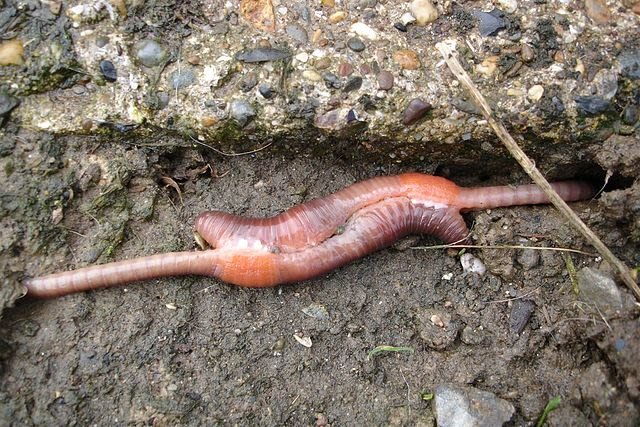
Did You Know That Aphids Are Born Pregnant?
Aphids illustrate the pros and cons of sexual and asexual reproduction quite dramatically. These insects, which include greenfly, are pests: they cause millions of pounds worth of damage to crops worldwide.
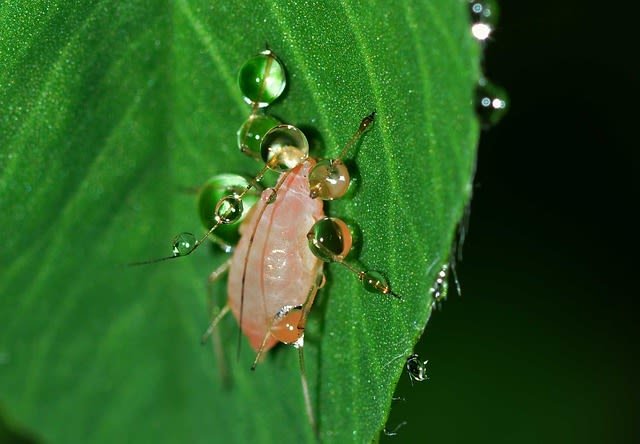
Although the exact details vary from species to species, a generalised aphid life cycle is as follows:
- After surviving the winter on tree bark, aphid eggs hatch in spring, producing a population of wingless females. These females are born pregnant – aphid embryos produced by parthenogenesis are already developing inside them.
- The aphids build up their numbers rapidly, taking advantage of the very favourable conditions at the start of the summer – big healthy plants full of sap, no competition for food and no predators.
- The large numbers of insects – and their waste – damage host plants and so food becomes scarce. (No population can go on expanding indefinitely: there are always limiting factors.) Predators such as ladybirds become more common as they take advantage of the abundant food and, towards the end of summer, conditions generally become unfavourable to the aphids. This triggers a ‘switch’ and the reproductive process produces winged aphids that can fly away and colonise new plants.
- Towards the end of summer, as the days get shorter, aphids of both sexes are born. Winged males and females then reproduce sexually, mating and laying eggs that can survive the winter.
ANIMAL LIFE CYCLES
Animals are diploid organisms that produce haploid gametes. Diploid cells contain two sets of chromosomes, haploid cells contain only one set. In animals, somatic (body) cells are diploid, while gametes (sex cells) are haploid. So, these haploid gametes fuse to produce a new diploid individual, so there is no alternation of generations (in contrast to plants).
Internal versus external fertilisation
The male gametes of all animals can swim. Animals that reproduce in water, such as fish and amphibians, fertilise egg cells outside the female’s body simply by releasing sperm . These swim through the water to reach the egg cells. We now know that the egg cells of many species release chemicals that attract the sperm, greatly increasing the chances of successful fertilisation. As animals evolved and began to colonise the land, they had to overcome the problems of reproducing out of water. Internal fertilisation became a necessity. Animals developed specialised organs such as a penis and complex behaviour patterns to enable the male to introduce sperm directly into the female’s body.
Animals have developed various strategies to protect the growing embryo(s) and prevent them from drying out. Some animals – birds and some reptiles, for example produce waterproof eggs. The egg has a tough material round the fertilised ovum. Eggs are laid by the animal and provide the embryo with a self-contained, watery environment. Organisms that lay eggs are said to be oviparous (ovi = egg, parous = birth).
Even so, eggs are vulnerable to damage and can be eaten by predators. A much safer place for fertilised ova is inside the female, and it makes sense to lay eggs as late as possible in development. Many species have taken this to its logical conclusion: their eggs hatch inside the mother and the young are born as immature miniatures of their parents. This process is known as ovoviviparity (ovo = egg, vivi = live, parity = birth). Many species of fish, amphibians and reptiles reproduce in this way.
Mammals also give birth to live young, but these do not hatch from eggs. In most species of mammal, the embryo grows inside a specialised organ called the uterus and is fed by a placenta. The young are born live, but their state of maturity at birth depends on the species. This reproductive process is called viviparity.
REPRODUCTION IN MAMMALS
Mammals show a great range of reproductive strategies that reflect their circumstances, but the basic life cycle of most mammals follows a general pattern. After mating, the fertilised egg cell(s) develop inside the uterus, nourished by the placenta. The gestation period of a mammal, the time between fertilisation and birth, often reflects the metabolic rate of the organism. It is shorter in small short-lived mammals such as mice, and longer in large long-lived mammals such as elephants.
Other factors complicate the length of gestation. For example, it is also limited by the size of the fetal skull (which must fit through the female’s pelvis at birth) and the mobility of the mother. In species where the mother needs speed and agility to survive, the gestation period tends to be shorter. Birth is followed by a period when the mother gives close protection and suckles her young. The length of upbringing varies greatly: it depends on factors such as degree of maturity at birth and the amount of learning required to survive.
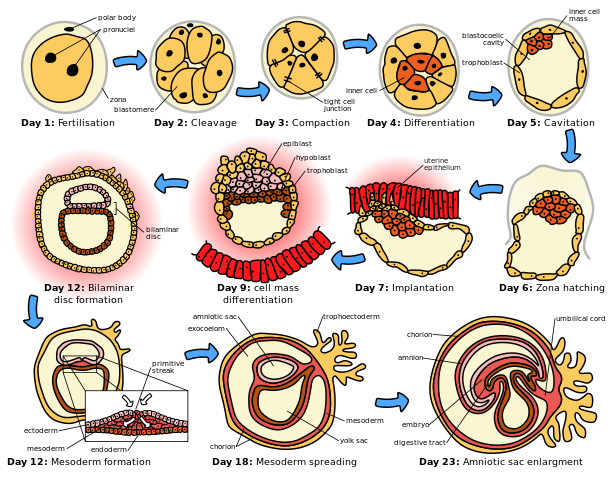
The initial stages of human embryogenesis.. Zephyris, CC BY-SA 3.0
The onset of sexual maturity marks the change from juvenile to adult. Most female mammals conceive as soon as they become sexually mature and enter their first oestrus (season). From then on, throughout their reproductive life, they are either pregnant, feeding young or both. A female’s reproductive life is usually brought to an end only by death. This has been the harsh fact for humans, too, until fairly recently. Even now, in societies where contraception is either unavailable or not used for cultural reasons, many women reproduce continuously.
The role of hormones in mammalian reproduction
For many animals, the timing of reproduction is vital. If there is a severe variation in the seasons, animals must ensure that their offspring are born when food is plentiful and conditions are mild. Hormones that control and synchronise reproductive events are produced by three different organs: the hypothalamus, the pituitary gland and the gonads (sex organs). The hypothalamus is a major point of contact between the nervous and endocrine (hormone) systems. Internal and external stimuli reach the hypothalamus, which responds by releasing hormones. They, in turn, control the rest of the endocrine system.
Day length is a classic example of an external stimulus. When the hours of daylight reach a threshold level, perhaps indicating the arrival of spring, the hypothalamus responds by releasing a hormone called a gonadotrophin releasing factor (GnRF). This controls the activity of the nearby pituitary gland, stimulating it to release hormones called gonadotrophins. Gonadotrophins have a direct effect on the gonads (the ovaries and testes). These respond by releasing steroid sex hormones such as oestrogen, progesterone and testosterone.

The chemical structure of progesterone. Rhododendronbusch, Public Domain
HUMAN SEXUAL REPRODUCTION
Sexual activity in humans has evolved to achicve more than just fertilisation. Although humans become sexually mature in their early to mid-teens, many societies have cultural and legal controls aimed at restricting sexual activity before the late teens. Although beyond the scope of this post, it is interesting to consider whether human sexual behaviour may have evolved to strengthen the emotional bond between a couple. This ‘social cement’ may make it more likely that couples will stay together and so provide a stable environment for raising children.
PUBERTY
Puberty is the time between childhood and adulthood: it marks the process of sexual maturing. We still don’t know exactly what triggers the onset of puberty, but we know that, early on, GnRF is secreted from the hvpothalamus. GnRF travels the short distance to the anterior pituitary, where it stimulates the release of gonadotrophins, follicle stimulating hormone (FSH) in females and interstitial cell stimulating hormone (ICSH) in males. These two hormones are chemically identical, but have different names because they have different effects in the two sexes.
In girls, FSH targets the ovaries, which it stimulates to produce oestrogen. This steroid hormone is responsible for many of the female sex characteristics. In addition, oestrogen stimulates the ovaries to start releasing egg cells (ovulation) and this leads to the first monthly period, or menstruation, an event known as the menarche.
To start with, periods tend to be irregular and unpredictable, and may sometimes occur without ovulation. Within about a year, hormone levels have increased to the point where they stimulate the regular development of follicles. This makes periods more regular and, unfortunately for many girls, painful. Period pain is mamly due to the hormone progesterone, which causes uterine cramps.
In boys, ICSH targets the interstitial cells of the testes. These are embedded in the connective tissue between the seminiferous tubules. ICSH stimulates these testis cells to secrete testosterone, the steroid hormone that stimulates development of male sex characteristics.
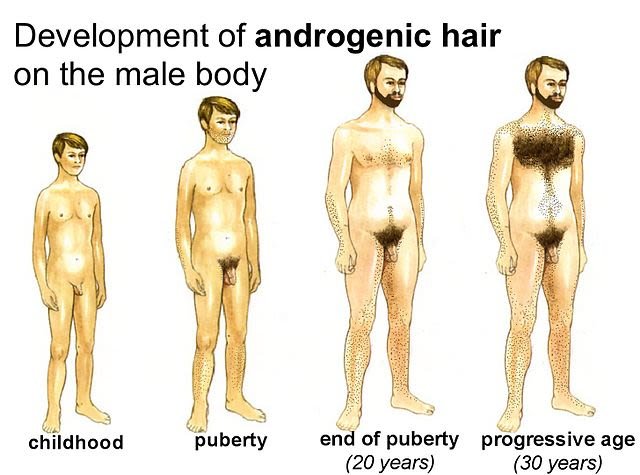
The age of onset of puberty
The average age for the onset of puberty is 10 to 14 in girls, 12 to 16 in boys. Interestingly, this is much earlier than in previous centuries. Two hundred years ago, the average age of the menarche in girls was 16, around six years later than it is now. The reason for this is almost certainly the improvement in diet. A better diet enables us to grow faster and so reach the same stage of maturity at an earlier age. In girls, the proportion of body fat appears to be important: a girl who is a dedicated athlete (a gymnast for example) and has a high muscle:fat ratio may find that the menarche is delayed Also. Girls who have started their periods but who then crash diet and lose a lot of weight may find their periods stop for a while.
THE MALE REPRODUCTIVE SYSTEM
The overall structure of the male reproductive system is shown in the diagram below. The male system secretes testosterone, makes and stores sperm and delivers them into the female’s body. Spermatozoa are made in the testes, a pair of organs that are held in a pouch of skin called the scrotum. It may seem odd that such delicate and vital organs are relatively unprotected outside the body, but there is a reason for this. The process of sperm production, spermatogenesis, is most efficient at around 35°C, two degrees cooler than the core of the body. Men whose testes do not descend into the scrotum cannot produce healthy sperm.

Drawing of the male internal sexual anatomy.. Male_anatomy.png: alt.sex FAQ, CC BY-SA 3.0
The penis
The penis introduces sperm into the female’s body so that internal fertilisation can occur. Some animals do not have a penis – most birds and reptiles, for example – and their attempts at fertilisation are a little more haphazard. The male produces semen from his genital opening and simply rubs it on to the female’s genital opening.
The testes and spermatogenesis
The production of sperm in human males is a continuous process, beginning at puberty and continuing well into old age: men in their 90s have fathered children. Spermatogenesis centres around the process of meiosis, and occurs at remarkable rate: over a thousand human sperm are made every second. Look again at the figure and you will see that each testis is composed of a series of lobules. They contain seminiferous tubules, the structures in which sperm production takes place. This processhas three main phases:
- Multiplication: As large numbers of sperm are needed, cells of the germinal epithelium divide by mitosis to produce many spermatogonia (sometimes called sperm mother cells).
- Growth: The spermatogonia grow into primary spermatocytes. At this stage the cells are still diploid (2n).
- Maturation: The diploid primary spermatocytes undergo meiosis. After the first division they become secondary spermatocytes and when meiosis is complete they have become haploid spermatids. In the final part of the maturation process, spermatids differentiate into the familiar spermatozoa (sperm).
Throughout their development, sperm cells are closely associated with Sertoli or nurse cells, from which they obtain nutrients. In the lumen of the seminiferous tubule, the tails of the spermatozoa are clearly visible, their heads are attached to Sertoli cells.
I do hope to continue from here in my next post.
Congratulations @loveforlove! You have completed the following achievement on the Steem blockchain and have been rewarded with new badge(s) :
You can view your badges on your Steem Board and compare to others on the Steem Ranking
If you no longer want to receive notifications, reply to this comment with the word
STOPTo support your work, I also upvoted your post!
Thanks for this again!
Regards
Chapper
U're welcome @chappertron.
It's been a while, hope u're good.
This post has been voted on by the SteemSTEM curation team and voting trail. It is elligible for support from @curie and @minnowbooster.
If you appreciate the work we are doing, then consider supporting our witness @stem.witness. Additional witness support to the curie witness would be appreciated as well.
For additional information please join us on the SteemSTEM discord and to get to know the rest of the community!
Thanks for having used the steemstem.io app and included @steemstem in the list of beneficiaries of this post. This granted you a stronger support from SteemSTEM.